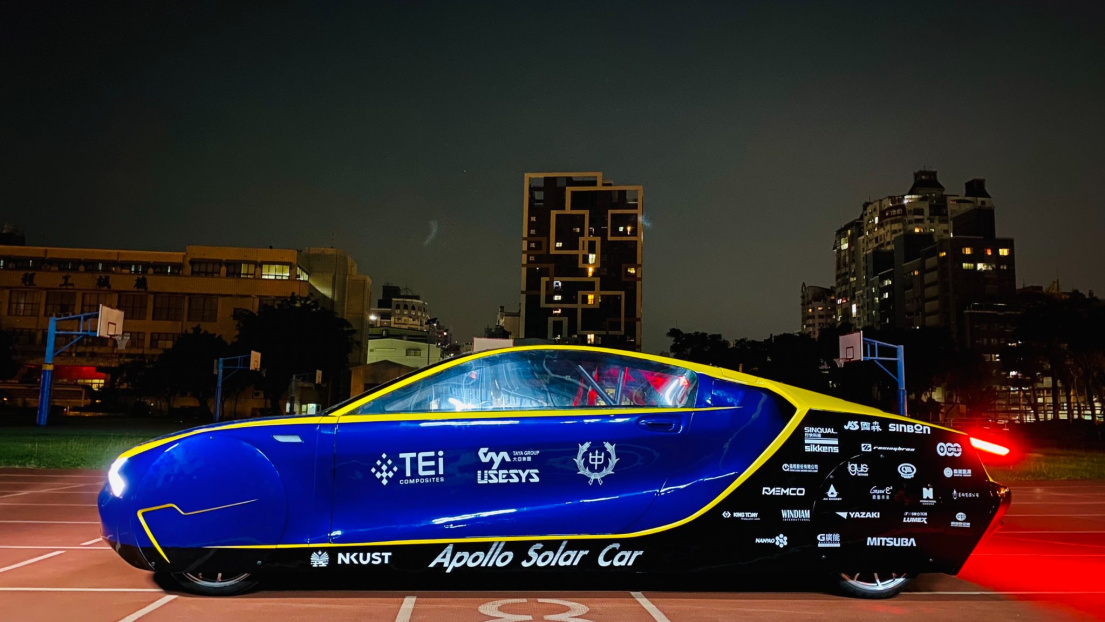Apollo Solar Car Team
Daily event results
| Arrival time | Control stop | Kms from Darwin | |
|---|---|---|---|
| Day 1 | Oct 22 13:44:25 | Katherine | 317 |
| Day 2 | Oct 23 15:03:59 | Tennant Creek | 985 |
| Day 3 | Oct 24 13:55:29 | Barrow Creek | 1209.834 |
| Day 4 | Oct 25 12:13:12 | Erldunda | 1691.663 |
How many times has your team participated in the event?
We have participated 6 times in years 2003, 2005 2007, 2011, 2013 and 2017.
What is the design philosophy behind your solar car?
Developing “green energy”, “safety”, “intelligence”, and “cloud-based” technologies for commercialized urban solar electric vehicle is the design philosophy of the Apollo Solar Car team. Also, we are committed to green power recycling and a sustainable future.
What is unique about your solar car?
The Apollo Solar Car (Apollo IX) is developing for a production-ready vehicle that is 4.5 meters long, 1.5 meters wide and 1.2 meters high, and can be converted into a 5-passenger saloon with a wider design in the future. The hood and roof of the two-passenger sports car are covered in self-developed flexible thin solar modules, and the expandable modular battery pack with the smart battery management system is installed in the safest space in the car and can travel 518 kilometers on a single charge.
Why does your team value participating in the Bridgestone World Solar Challenge?
Responding to the dramatic global climate anomalies, many countries aim for “2050 Net Zero Emission”, including Taiwan. Both of “green energy” and “electric vehicles (EV)” are the trend to accelerate Net Zero Emission. Apollo Solar Car is actually electric car with photovoltaic modules (PVEV). The PVEV has two unique abilities: self-charging and energy-storage, which gains advantages over traditional EV. Commercial production of Apollo solar cars has always been the mission of the team. We hope to test and validate our designs through BWSC. BWSC is not just a competition but a big step towards our goal.
What is the one thing your team is looking forward to when you visit Australia?
To test and validate the designs and performance of Apollo IX. Moreover, we look forward to talking with other teams from the world and to share knowledge with each other. Hope we can learn from the many experiences this time.




